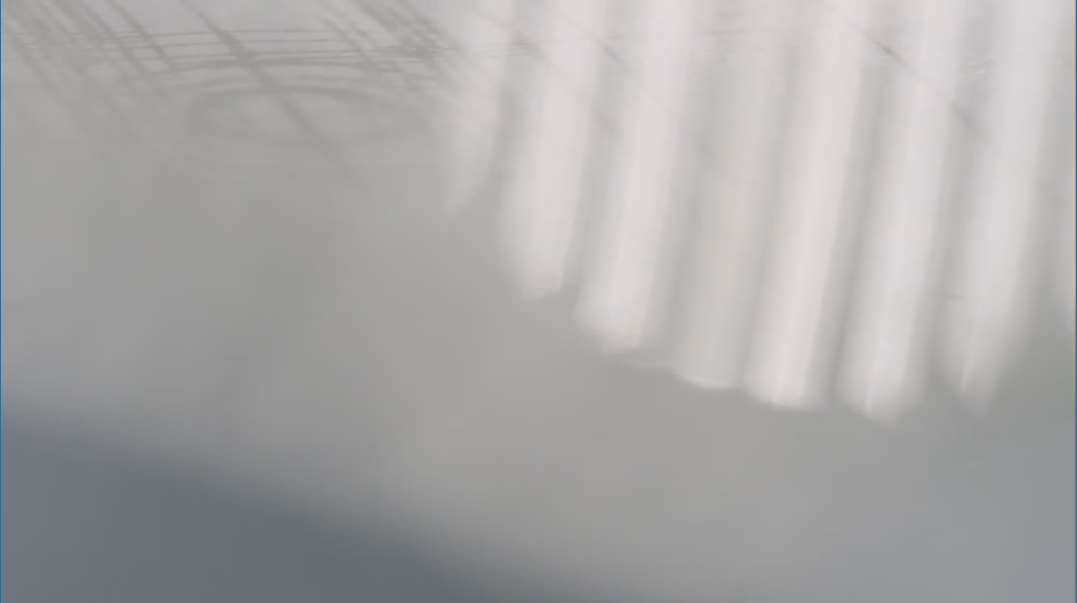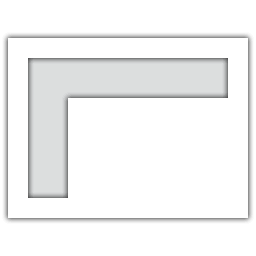1. Wrap angle

Material
Wrap angle W
Material
Wrap angle W
Crease prevention
for paper
15° - 20°
for Fourdrinier wires
15° - 20°
for FABRIC sieves
20° - 40°
for wet felts
30° - 60°
Material
Wrap angle W
Material
Wrap angle W
Easily stretchable plastic webs, such as polyethylene, polypropylene and similar, according to thickness
1 - 6 µ
60° - 90°
8 - 20 µ
45° - 60°
Greater than 20 µ
45°
Cellophanes
15° - 20°
Material
Wrap angle W
Material
Wrap angle W
Crease prevention and removing creases from textiles
Felts
15° - 20°
Easily stretchable cotton
60° - 90°
Nylon fabric
60°
Coated fabric
60°
Glass-fibre material
60°
All kinds of materials
60° - 90°
2. Distance to next guide roller
The distance between the spreader roller and the next guide roller should not be too big. Experience tells us the best distance “E” should equal two to three times the diameter of the spreader roller.3. Feed
The web should always be fed in from the concave side. The web path “A” can be longer, but it should not be more than 2 x “E”.4. Setting
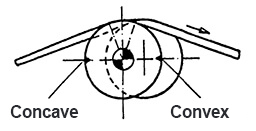 When subject to normal material and tension ratios the spreader roller is set to the position depicted opposite. That ensures loads are applied uniformly to the whole of the roller, which prevents the rubber covering wearing unevenly.
When subject to normal material and tension ratios the spreader roller is set to the position depicted opposite. That ensures loads are applied uniformly to the whole of the roller, which prevents the rubber covering wearing unevenly.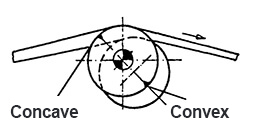 When processing webs with slack edges the concave side of the roller is swung out from its normal position until the edges bear firmly on both ends of the roller.
When processing webs with slack edges the concave side of the roller is swung out from its normal position until the edges bear firmly on both ends of the roller.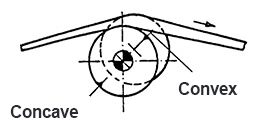 When the middle of the web is slack the convex side of the roller is swung out from its normal position until the middle of the web is tensioned properly.
When the middle of the web is slack the convex side of the roller is swung out from its normal position until the middle of the web is tensioned properly. 

